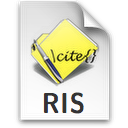

| ORIGINAL ARTICLE |
 |
 |
In the era of sustainable development, phytoremediation has emerged as a promising, eco-friendly strategy for reclaiming heavy metal-contaminated environments. This study explores the phytoremediation potential of Alternanthera ficoidea for cadmium (Cd) and lead (Pb) and investigates the role of beneficial microbes—Azotobacter sp., Pseudomonas fluorescens, and Trichoderma viride—in enhancing metal uptake. Remarkably, the roots of plants treated with Cd + Azotobacter sp. exhibited a 173% increase in Cd accumulation compared to Cd-only treatments. Even more striking, Cd accumulation in the shoots surged by 1025% in plants treated with Cd + T. viride. Conversely, microbial inoculation significantly reduced Pb accumulation in both roots and shoots of A. ficoidea. Bioaccumulation (BCF) and translocation factor (TF) analyses revealed that microbial augmentation, particularly with Azotobacter sp., enhanced the phytostabilization capacity of A. ficoidea for Cd. Additionally, the species demonstrated inherent potential for Pb phytostabilization. These findings underscore the synergistic benefits of combining phytoremediation with microbial assistance for the sustainable detoxification of heavy metal-laden soils.
Key words: Heavy metals, Cadmium, Lead, Azotobacter sp., P. fluorescens, T. viride

